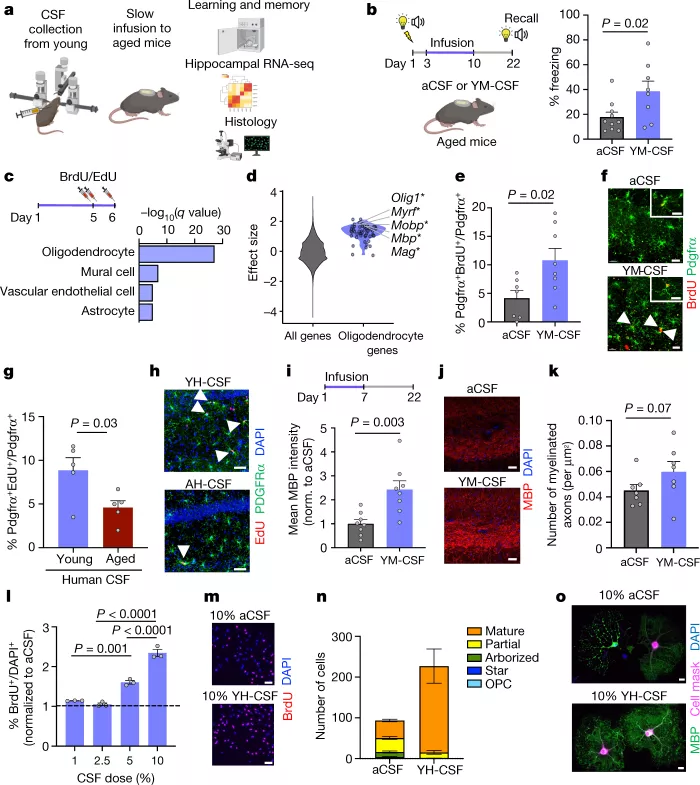Scientists found that the memory improvement of elderly mice perfused with cerebrospinal fluid (CSF) of young mice may be due to growth factors that can restore the function of nerve cells The relevant research results were published in nature on May 11, which proved that the cerebrospinal fluid of young mice has potential regeneration performance for aging brain.

As the brain ages, cognitive decline is exacerbated by an increased risk of dementia and neurodegenerative diseases. Understanding the effects of systemic factors on the brain over a lifetime can provide new knowledge for the development of potential therapies to slow brain aging. Cerebrospinal fluid is a part of the direct environment of the brain, which is responsible for transporting nutrients to brain cells and transmitting signals of various molecules and growth factors. However, the role of cerebrospinal fluid in brain aging has not been fully understood.
To test the potential regeneration of cerebrospinal fluid, Tony Wyss Coray of Stanford University in California and colleagues perfused the cerebrospinal fluid of young mice (10 weeks old) into the brains of old mice (18 months old). The authors reported that this treatment improved the memory function of elderly mice. Studies have shown that the cerebrospinal fluid of young mice can enhance the stimulation of oligodendrocyte precursor cells in the hippocampus (the memory center of the brain), and has the potential to regenerate oligodendrocytes (a kind of nerve cells) and myelin (a fatty substance that can protect nerve cells).
In order to clarify the mechanism behind these effects, the authors studied the signal transduction pathway activated by cerebrospinal fluid of young mice. Studies have shown that a transcription factor called SRF can mediate the effect of cerebrospinal fluid of young mice on oligodendrocyte precursor cells, and the expression of this transcription factor will decrease in the hippocampus of old mice.
The authors also found that growth factor named fgf17 is a candidate molecule to induce SRF signal transduction. The expression level of fgf17 in aging mice has been shown to decrease. However, injection of fgf17 into aged mice can reproduce the effects of cerebrospinal fluid perfusion in young mice, including inducing oligodendrocyte precursor cell proliferation and improving memory function.
The authors conclude that the results suggest that fgf17 is a potential factor in promoting the regeneration of aging brain.
"This study not only suggests the potential of fgf17 gene as a therapeutic target, but also shows the possible benefits of a drug delivery path that allows drugs to enter cerebrospinal fluid directly for the treatment of dementia." Miriam Zawadzki and Maria Lehtinen of Boston Children's Hospital in Massachusetts wrote in a simultaneous news and opinion article.
Relevant paper information:
https://www.nature.com/articles/s41586-022-04722-0
Author: Feng Weiwei source: China Science Daily